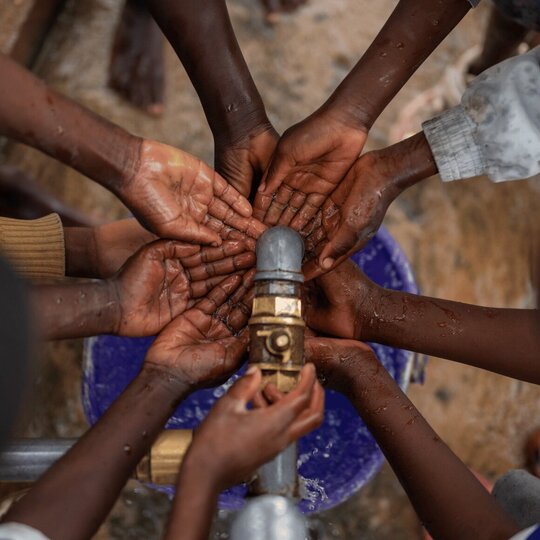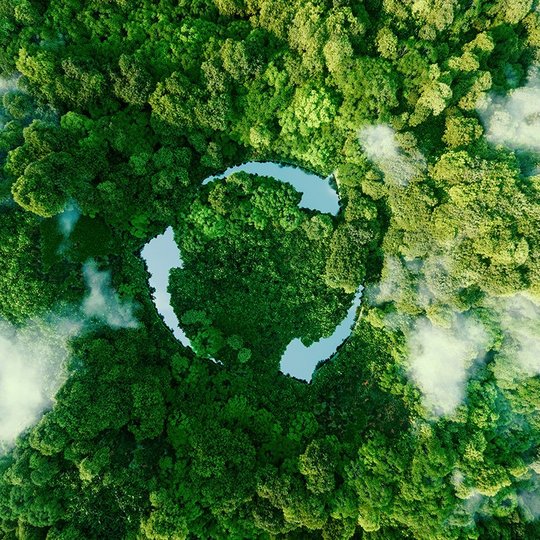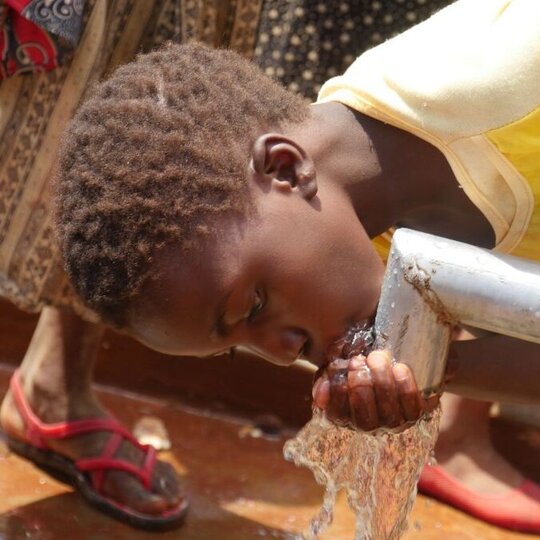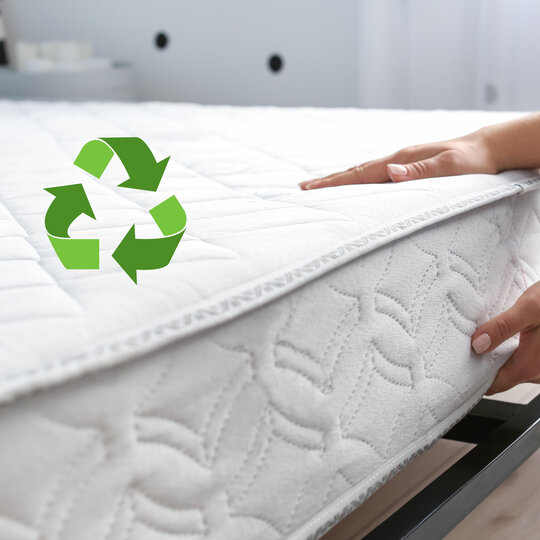Recycling old mattresses as a contribution to the circular economy
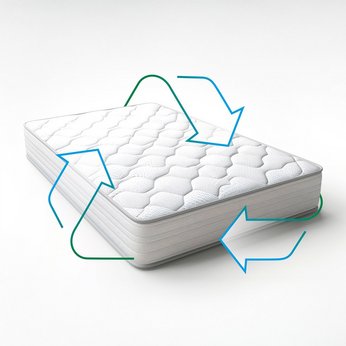
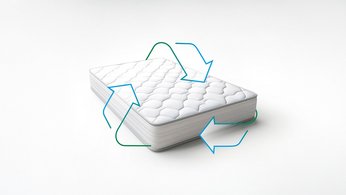
Mattresses are made from valuable raw materials - depending on the type of mattress, they can contain up to 10-15 kilograms of foam. At NEVEON, we have set ourselves the goal of returning this foam to the product cycle. In this interview, NEVEON CEO Jürgen Kleinrath provides insights into the challenges and solutions surrounding mattress recycling.
Let's start with a big picture question: How many mattresses in Europe and the USA reach the end of their useful life every year?
Jürgen Kleinrath: In the EU, around 40 million mattresses reach the end of their life every year - that's the equivalent of a pile of mattresses 904 times the height of Mount Everest. Around 8 million of these come from Germany. In the USA, there are an estimated 25 to 30 million. However, reliable figures are only available in states that participate in the bye-bye mattress recycling program (California, Rhode Island, Connecticut and Oregon). Around 15 million mattresses have been recycled there since 2016.
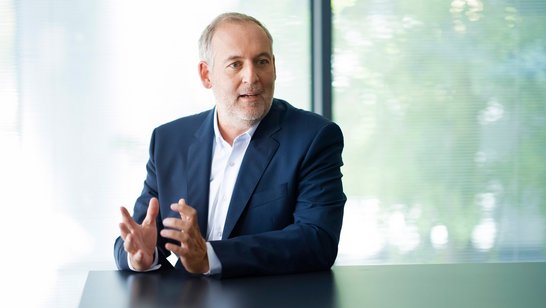
What is NEVEON doing to create sustainable solutions here?
Jürgen Kleinrath: Circularity and the decoupling of growth and resource consumption require collaboration along the entire value chain. In 2021, for example, we worked with BASF to produce foams with 80% recycled content in the polyol component and then transformed them into the world's most sustainable mattress concept. BASF was responsible for the chemical recycling of old mattresses; we at NEVEON produced new, high-quality mattresses from the recovered raw materials. The quality of the mattresses is in no way inferior to those made from virgin raw materials. They are not yet ready for industrial production, but we are industry pioneers.
In addition to chemical recycling, we also focus on the mechanical recycling of old mattresses: At the beginning of 2025, we founded the joint venture LOOP-it with BRANTNER Green Solutions - Austria's first mattress recycling company. Mattresses are dismantled and mechanically recycled there. The raw material saved in this way is then used in new products such as carpet underlays or sound insulation.
How many mattresses are currently recycled - and what happens to the rest?
Jürgen Kleinrath: Unfortunately, only five to seven percent of old mattresses are recycled in the EU. The rest is mostly incinerated in Western Europe and often landfilled in Eastern Europe or the USA. Countries such as the Netherlands, France, Belgium and the United Kingdom show that there is another way - they promote recycling through legal regulations, such as extended producer responsibility (EPR) or incineration bans.
What are the challenges of collecting and recycling?
Jürgen Kleinrath: Logistics is a big issue: mattresses are bulky, the transport capacity is low - that makes collection expensive. Disassembly is also time-consuming: We receive old mattresses made from a wide variety of materials - foams, spring cores, latex, sometimes even horsehair. Currently, the mattresses we collect come from a time when recyclability was not a design criterion and the mattresses consisted of many layers glued together. This is difficult because design for recycling means mono-materiality and, at best, no adhesives. We at NEVEON keep this in mind today when we produce mattresses.
Are the collected old mattresses dismantled by hand?
Jürgen Kleinrath: Dismantling used mattresses is not a nice thing to do. At LOOP-it, we therefore rely on automated dismantling. In general, foam is easy to recycle mechanically. It becomes difficult with mattresses with several glued layers.
What is the carbon footprint of recycled mattresses?
Jürgen Kleinrath: In addition to the raw materials used to produce a mattress, the incineration of old mattresses, which is widespread in Western Europe, causes considerable CO₂ emissions. Our calculations show: Up to 85% fewer emissions are possible if mattresses are recycled instead of incinerated.
What role does politics play in mattress recycling - especially at EU level?
Jürgen Kleinrath: Reliable framework conditions are essential. We are calling for mattresses to be included in the EU directive on extended producer responsibility (EPR regulation). The Waste Framework Directive is currently being revised, but mattresses are not on the list of priorities. Together with the Austrian Mattress Alliance - of which we are a founding member - we have drafted an open letter to change this.
With our LOOP-it joint venture, we have deliberately led the way, even though there is currently no legally supported recycling infrastructure for mattresses in Austria. We are going the extra mile here - for future generations.
And one final question: what happens to the recycled material?
Jürgen Kleinrath: Chemical recycling produces high-quality polyols, which we use to make mattresses again - a closed loop. In the mechanical process, the material is processed into new, different products - such as carpet underlays or sound insulation.
Thank you very much for the exciting insights!
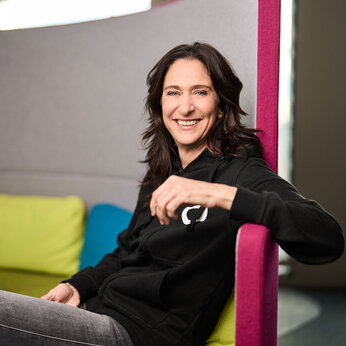
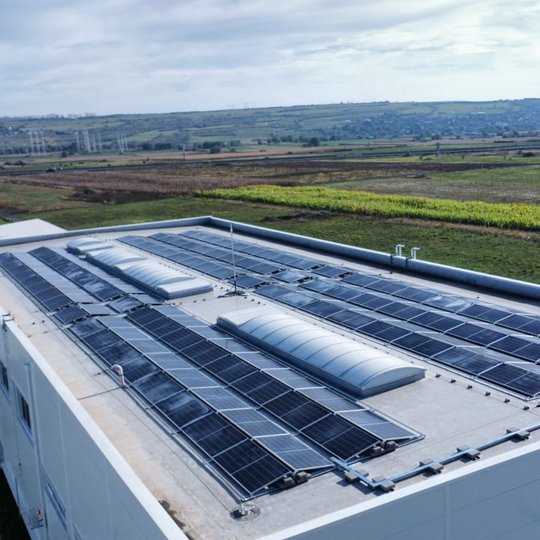
![[Translate to Englisch:] [Translate to Englisch:]](/fileadmin/_processed_/8/b/csm_NEVEON_VcA_Projektreise_2023_IMG_4683__Large__0fdfe0b4eb.jpg)
![[Translate to Englisch:] [Translate to Englisch:]](/fileadmin/_processed_/2/9/csm_Matratzen_Recycling__Large__90a7f6ded1.jpg)

